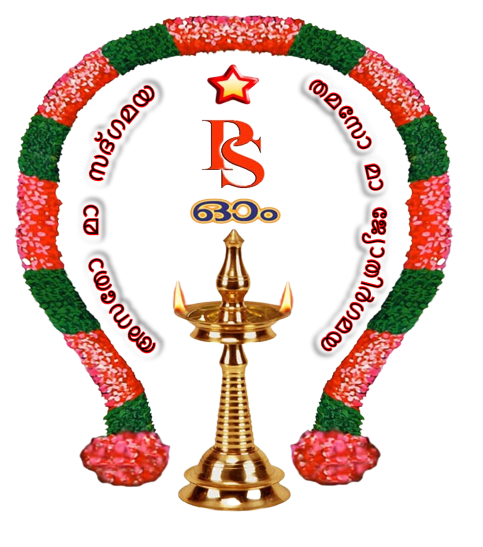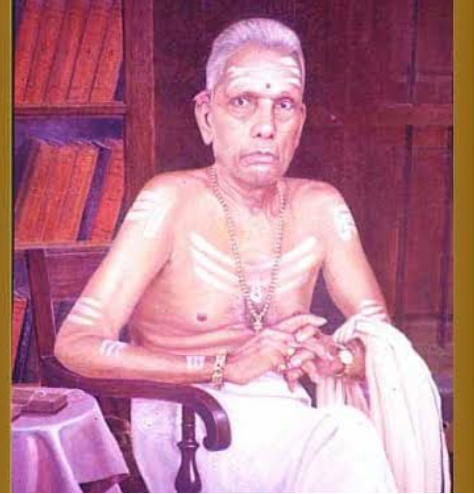A great Sanskrit scholar lived between 1875-1964.
He was born on 29 September 1875 to Vadakkedathu Narayanan Nambudiri and Pappikutti Pisharasyar of Attoor Pisharam, a small village in Thrissur district, Kerala. He received primary education from his father. A maternal uncle, Bharata Pisharody initiated him into classical Sanskrit. Further education in vyākaraṇa, advanced kāvyas, etc. was provided by Meledathu Ramunni Nambiar. A paternal uncle Vengeri Vasudevan Nambudiri, invited him to live in his house and taught him nyāya, vyākaraṇa, and alaṃkāra. For some two years he assisted an aged uncle in managing a vedic school at Ceruvannur Sabhamatham. At the age of eighteen, Attoor unhappy with managerial responsibilities, left for Kodungallur Kovilakam with the twenty-five rupees that he had saved.
Attoor who had already mastered alaṃkāra, specialized primarily in nyāya under Mahamahopadhyaya Bhattashri Godavarma Tampuran. The education and the experiences at Kodungallur Kovilakam were instrumental in shaping Attoor’s intellect and outlook, as he recalled later in life. At 22, Attoor returned home as a complete scholar and started instructing in Sanskrit. His first student was Mooppil Nair, the landlord of the house where he stayed. To the Nair, he imparted Sanskrit lessons receiving lessons on the veena in return. At 25, he married Nannikutti Pisharasyar of Vadakootu Pisharam in Pazhayannūr. This alliance was very propitious. Nannikutti was musically trained and a vainika, while the father-in-law, Bharata Pisharody was an expert vainika. It provided the perfect foil for Attoor to continue learning from them music and veena while pursuing his exploration into the science of music. The couple shared this wonderful relationship imbibibed in music for the next fifty-six years of their married life until the demise of Nannikutti Pisharasiar.
His ascent as an academic began with his appointment as a teacher in Alathur High School. After that he worked for five years at the Bhaaratavilāsam Press in Thrissur. In 1911, at the invitation of Kerala Panini A. R. Rajarajavarma, he was inducted as a Professor at The Maharājas College, Thiruvananthapuram as a Professor. Following the tenure of Rajarajavarma, Attoor presided over the Oriental language department for a period of sixteen years when he retired from public teaching career. This was followed by a prestigious appointment as Tutor to His Highness, The Maharaja of Travancore in 1927 that lasted five years. After this, Attoor officially retired and returned to Thrissur where he spent a very active post-retired life in his newly built home appropriately named `Sree Thilakam’. Together with his wife, they ran a gurukulam where music flowed. After his wife’s death, Attoor retired completely into himself, away from public life, away from teaching, the passion of his life. He died on 5th June 1964.
His most important work is Sangeeta Chandrika , which gives an exposition of musical theory on a historical basis. It is in the form of sootra-s in Sanskrit, with elaborate commentary in Malayalam. Its 12 chapters deal with nada, sruti, swara, veena, grama moorcchana, mela, tala, varnaalankara, gamakasthayadi, prabandha, raga and geeta. The last chapter contains about 450 geeta-s, one for each raga, with their sahitya forming a continuous narrative on the Ramayana story. Some of his other works are following: ‘Keralakadha’, ‘Puranapurushanmar’, ‘Neethimala’, ‘Dheeravratham’, ‘Vishavaidyasarasamgraham’, ‘Keralavarmaramayanam’, ‘Balarathnam’, ‘Leelathilakam’, ‘Laghuramayanam’, ‘Keralacharithram’, ‘Bhashasahityacharutha’, ‘Bhashayum Sahityavum’, ‘Vidyavivek`am’.


I am extremely greatful & thank pisharody samajam for bringing out an excellent article on the late Attoor Krishnapisharody, the eminent Sanskrit scholar on his birthday, today. Thanks
I am extremely happy to learn about Attoor Krishnapisharody and i bow before his knowledge.
പ്രശസ്ത പിന്നണി ഗായകൻ പി ജയചന്ദ്രന്റെ ദേഹവിയോഗം മലയാളികൾക്കും സംഗീത ലോകത്തിനും തീരാ നഷ്ടം. ആദരാഞ്ജലികൾ.